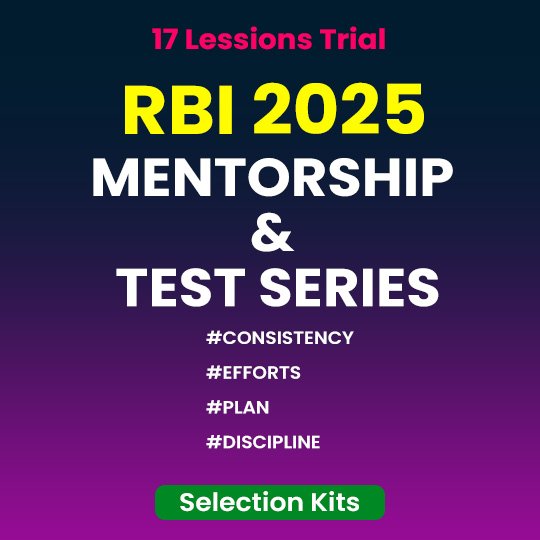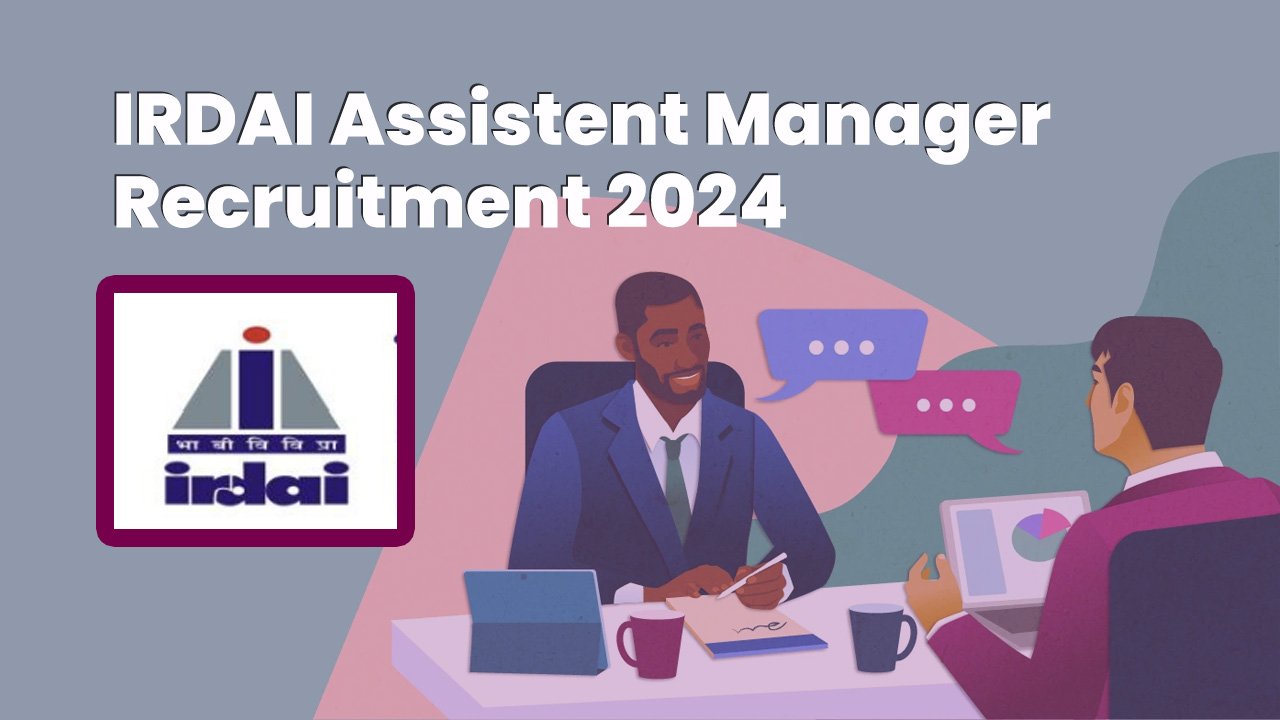Introduction
The IRDAI Phase 2 examination has consistently tested candidates’ understanding of the dynamic and evolving insurance landscape. Paper III – Insurance and Management, particularly the Insurance section, demands not only a strong grasp of theoretical concepts but also practical insights into the real-world challenges and opportunities in the insurance sector.
This blog delves deep into previous years’ questions (PYQs) from 2017 to 2024, offering a comprehensive analysis of recurring themes, emerging topics, and strategic focus areas. Whether it’s reinsurance, insurance penetration, or the role of intermediaries, the PYQs highlight the industry’s response to economic cycles, regulatory shifts, and technological advancements.
Key themes such as the impact of business cycles on insurance, mobilizing savings, and the integration of digital platforms like BimaSugam reflect the industry’s adaptation to India’s changing economic priorities. Moreover, questions on dynamic vs static risks, insurable interest, and geopolitical challenges underscore the evolving complexity of the insurance sector.
By exploring these PYQs, candidates can identify important topics like:
- Risk-based concepts (dynamic/static risk, pure risk).
- Core insurance principles (reinsurance, insurable interest, co-insurance).
- Industry insights (penetration, density, and intermediaries’ role).
- Quantitative and analytical questions (premium growth, claims settlement).
This blog equips aspirants with actionable insights, structured analysis, and a strategic approach to ace the Insurance section of the IRDAI Phase 2 exam.
Importance of Analyzing Previous Year Questions (PYQs)
Analyzing Previous Year Questions (PYQs) is an indispensable component of successful exam preparation, providing a wealth of information that significantly improves your study approach.

- Uncovering Exam Patterns: PYQs help you spot recurring themes and key subject areas. You’ll grasp how questions are structured and how they’ve changed over time, allowing you to prioritize high-yield topics for concentrated study.
- Honing Time Management Skills: By working through PYQs, you can gauge the time needed for various question types, enabling you to devise a strategy for completing the exam within the allotted time. Consistent timed practice with PYQs will enhance both your speed and precision.
- Evaluating Performance and Self-Assessment: PYQs offer a clear picture of your strengths and weaknesses across different sections. They highlight areas demanding more practice, allowing you to track your progress and adjust your study plan as needed.
- Deciphering the Examiner’s Mindset: Through PYQ analysis, you can discern if the exam leans towards conceptual understanding or factual recall. Examining case study questions refines your problem-solving abilities, and you’ll understand the desired equilibrium between theoretical knowledge and practical application.
- Cultivating Exam Confidence: Familiarity with PYQs lessens anxiety and uncertainty about the exam. It bolsters your capacity to tackle challenging or convoluted questions and sharpens your critical thinking skills under pressure.
- Crafting an Efficient Revision Plan: PYQs act as readily available practice materials for streamlined revision. They assist in pinpointing high-value topics for last-minute review sessions and solidify your understanding by applying concepts in authentic exam-like situations.
Incorporating PYQs into your study regimen is a highly effective tactic for strengthening your preparation, refining your test-taking proficiency, and significantly boosting your prospects of success in the IRDAI Grade A exam. Regular practice and thorough analysis can profoundly impact your performance.
Exam Pattern & Syllabus
Phase II: Mains Examination The IRDAI Assistant Manager Mains Exam is conducted in an offline, pen-and-paper format, requiring candidates to demonstrate strong descriptive writing skills. The exam consists of three papers, each carrying 100 marks, summing up to a total of 300 marks. The entire examination lasts for 180 minutes, with 60 minutes allotted per paper.

Insurance syllabus
a) History of Indian Insurance, principles of Insurance;
b) Risk and uncertainty, pooling and diversification of risk, Indemnity and Insurable interest;
c) Legal foundations of Insurance, basics in Group/Health Insurance/Pensions; Intermediation: role in mobilizing savings, evolution of various types and Bancassurance in India;
d) Functions performed by Insurers: Product design, pricing, distribution, underwriting, claims, Investment and Reinsurance;
e) Insurance lines and products: Property-Liability, Life Insurance and Annuities and Health Insurance; Liability risks and Insurance, valuation and Solvency requirements, Specialist Insurance lines in India – Agricultural and Export Credit Guarantee; Reinsurance, GIC of India, obligator sessions and retention of risk within the Country.
IRDAI Grade A – Phase 2 :Paper III – Insurance and Management
Sub-section Part 1 – Insurance
PYQ 2017 Part 1 – Insurance
Attempt any Five questions. Each question carries 10 marks. Write answer in 100 Words.
a) What is reinsurance and what is its importance?
b) What is concentration risk and how to manage and mitigate?
c) Discuss insurance penetration in India and compare India’s growth with the US and China for life and non-life insurance penetration from 2013-2015.
d) Role of brokers and banks in insurance as intermediaries.
e) What is insurance density and does high insurance density mean high insurance inclusion?
f) What is insurable interest?
g) What is co-insurance and Comment on co-insurance from a risk management point of view?
PYQ 2023Part 1 – Insurance (35 Marks)
- Impact of business cycle on insurance. (7.5 Marks)
Answer the following questions (2-3) based on the data given in the table below: (10 marks)
Table 1: Expanded Performance Data for 15 Classes of Business Over 10 Years
| Class of Business | Year 1 Premiums ($M) | Year 10 Premiums ($M) | Percentage Growth | Average Annual Growth (%) | Claims Settlement Ratio (%) | Net Profit/Loss Ratio (%) |
| Auto | 100 | 200 | 100% | 7.2% | 95% | 12% |
| Life | 150 | 300 | 100% | 7.2% | 90% | 15% |
| Health | 120 | 240 | 100% | 7.2% | 88% | 10% |
| Property | 80 | 160 | 100% | 7.2% | 93% | 8% |
| Casualty | 50 | 75 | 50% | 4.1% | 96% | 6% |
| Marine | 70 | 105 | 50% | 4.1% | 85% | 9% |
| Aviation | 30 | 45 | 50% | 4.1% | 89% | 18% |
| Liability | 60 | 90 | 50% | 4.1% | 92% | 5% |
| Reinsurance | 110 | 165 | 50% | 4.1% | 89% | 11% |
| Agricultural | 40 | 60 | 50% | 4.1% | 95% | 10% |
| Export Credit | 130 | 195 | 50% | 4.1% | 82% | 14% |
| Cyber | 90 | 135 | 50% | 4.1% | 87% | 7% |
| Fire | 100 | 150 | 50% | 4.1% | 90% | 9% |
| Travel | 115 | 172.5 | 50% | 4.1% | 93% | 8% |
| Pet | 95 | 142.5 | 50% | 4.1% | 93% | 2% |
Questions:
- Identify the top three best-performing classes of business based on the provided data. (5 marks)
- Analyze which of the class has the best financial effectiveness out of the classes identified as the top performer in Question 1 based on claims settlement and net profit/loss ratios. (5 marks)
Read the following passage:
Passage:
Person A: I’ve been looking into different policies lately because I want to ensure my family is financially secure if something unexpected happens to me. The plan I’m considering promises a payout to my family in case of my death, which can help cover living expenses and debts.
Person B: That sounds like a crucial safety net. I’ve been focusing on a different kind of plan—something that covers mishaps. For instance, if I were to get injured in an accident and couldn’t work, this policy would help cover my medical bills and even provide some income replacement during my recovery.
Person A: Absolutely, it’s all about reducing financial burdens during tough times. My choice helps take care of long-term security by providing a lump sum, which is especially important since I have young kids.
Person B: Right, and while my focus is more immediate, dealing with unforeseen events that could derail my day-to-day life, it’s comforting to know that there are specific plans aimed at protecting against those short-term disruptions.
Questions:
A. What is the type of insurance Person A is discussing? (2.5 marks)
B. Compare the insurance discussed by Person A with that mentioned by Person (5 marks)
- Discuss the role of insurance in mobilizing savings and facilitating financial intermediation. (7.5 marks)
- Discuss the key functions performed by insurers, focusing on product design, claims management, investment, and reinsurance, including relevant examples. (7.5 marks)
PYQ 2024 Part 1 – Insurance (35 Marks)
Q1. Answer any four out of the six questions given below in 150 words each. (7.5 x 4 = 30 Marks)
A. Explain the differences between dynamic risk and static risk.
B. What are risks, perils, and hazards in the insurance industry?
C. Discuss the concept of insurable interest and explain how it is identified in marine insurance, property insurance, and life insurance.
D. Why can’t pure risk be controlled? Discuss the difficulties insurers face in controlling pure risk.
E. What role do surveyors play in the assessment of losses in the insurance sector?
F. What are the major geopolitical challenges faced by the insurance sector?
Q2. Use the data provided in the following bar graphs to answer the questions below.
(2.5 x2 = 5 marks)

A. Percentage Change of insurance premium collected by the company over the two years?
B. Absolute change of insurance premium collected by the company over the two years?
Syllabus Topics vs PYQs Analysis:
1. History and Principles of Insurance
- Syllabus Coverage:
- Historical evolution of the Indian insurance sector.
- Core principles: indemnity, insurable interest, utmost good faith, contribution, and subrogation.
- PYQ Occurrence:
- 2017 Question (f): “What is insurable interest?” (Direct match).
- 2024 Question (C): “Discuss the concept of insurable interest and how it applies to marine, property, and life insurance.”
- Analysis:
- Questions related to core principles like insurable interest are common.
- Focus is also placed on how principles are practically applied to various insurance types.
2. Risk and Uncertainty, Pooling and Diversification of Risk
- Syllabus Coverage:
- Differentiation between pure risk and speculative risk.
- Methods to manage risk, including pooling and diversification.
- PYQ Occurrence:
- 2024 Question (A): “Explain the differences between dynamic risk and static risk.”
- 2024 Question (D): “Why can’t pure risk be controlled? Discuss the difficulties insurers face in controlling pure risk.”
- Analysis:
- Risk-related questions are regularly tested, particularly focusing on types of risks and challenges in controlling them.
3. Legal Foundations, Health Insurance, and Bancassurance
- Syllabus Coverage:
- Basics of group/health insurance and pensions.
- Legal frameworks governing insurance and bancassurance.
- PYQ Occurrence:
- 2017 Question (d): “Role of brokers and banks in insurance as intermediaries.”
- 2024 Question (E): “What role do surveyors play in assessing losses?”
- Analysis:
- Legal foundations (e.g., surveyors’ role) and the involvement of banks and brokers in distribution are often tested.
4. Functions Performed by Insurers
- Syllabus Coverage:
- Product design, pricing, underwriting, claims management, and reinsurance.
- PYQ Occurrence:
- 2017 Question (g): “What is co-insurance, and comment on its relevance from a risk management perspective.”
- 2024 Question 6: “Discuss key functions performed by insurers, including examples.”
- Analysis:
- Regular testing of functions like product design, claims management, and underwriting, with a focus on their real-world applications.
5. Insurance Lines and Products
- Syllabus Coverage:
- Property-liability insurance, life insurance, health insurance, agricultural insurance, and export credit guarantee.
- Specialized lines like reinsurance and GIC of India.
- PYQ Occurrence:
- 2017 Question (a): “What is reinsurance and its importance?”
- 2024 Passage Analysis (A & B): Focus on long-term (life insurance) and short-term (accident insurance) coverage.
- Analysis:
- PYQs often cover specialized insurance lines like reinsurance and practical comparisons of different insurance products.
6. Valuation, Solvency, and Risk Management
- Syllabus Coverage:
- Liability risks, valuation, solvency requirements, and risk management through co-insurance and other mechanisms.
- PYQ Occurrence:
- 2017 Question (b): “What is concentration risk and how to mitigate it?”
- 2017 Question (g): “Comment on co-insurance from a risk management perspective.”
- Analysis:
- The syllabus aligns with frequent questions on risk management approaches like co-insurance and solvency mechanisms.
7. Quantitative Analysis of Data
- Syllabus Coverage:
- Data analysis for claims, premiums, and growth trends.
- PYQ Occurrence:
- 2024 Question (Q2): “Calculate percentage and absolute change in insurance premiums over two years.”
- Table Analysis (Q2-3): Focus on claims settlement ratios, profit/loss ratios, and class performance.
- Analysis:
- Numerical questions require familiarity with claims data, premium growth, and performance metrics.
Key Insights for Aspirants:
- Conceptual Mastery is Critical:
Topics like risk management, insurable interest, and insurance density are consistently recurring. Build a strong foundational understanding. - Focus on Real-World Applications:
Questions emphasize practical scenarios like surveyors’ roles, intermediaries (banks/brokers), and product comparisons (e.g., life vs accident insurance). - Quantitative and Analytical Skills Matter:
Practice solving questions involving data interpretation (growth, claims ratios) and numerical calculations related to premiums and settlements. - Broad Coverage Across Insurance Lines:
Specialized lines like agricultural insurance, reinsurance, and export credit guarantee frequently feature in PYQs. - Current Trends Are Key:
Topics like geopolitical challenges and evolving practices (e.g., digital platforms like BimaSugam) are becoming more prominent.
Weightage of Topics in Past Exams
The Insurance section of the IRDAI Grade A Phase 2 exam is designed to test a candidate’s understanding of insurance fundamentals, regulatory frameworks, and current industry trends. An analysis of past year questions (PYQs) reveals consistent patterns and key areas for focused preparation.
Topic-Wise Question Distribution (2023 vs. 2024):
Insights from PYQ Trends:
- Core Concepts Remain Vital: “Basics, History, and Principles of Insurance” consistently feature, emphasizing the importance of understanding foundational concepts such as indemnity, insurable interest, and utmost good faith.

- Shifting Focus in Legal Frameworks: While “Legal Framework & Insurance Policies” saw a decrease in questions in 2024, it’s crucial to maintain coverage of insurance contracts, liability risks, and evolving policy structures.
- Increased Emphasis on Risk: 2024 demonstrated a significant increase in questions related to “Risk and Uncertainty,” with a clear focus on different types of risks, perils, and hazards within the insurance context.
- Insurers’ Roles Are Key: Topics like claims management, underwriting, and product design under “Functions of Insurers” consistently appeared, highlighting their critical role in the industry.
- Sporadic but Important “Miscellaneous” Topics: Questions on insurance penetration, density, and the role of surveyors appear intermittently, indicating the need for a broad understanding of the insurance landscape.
Difficulty Level of Insurance Questions:
| Level | 2024 | 2023 | Total |
| Easy | 6 | 3 | 9 |
| Moderate | 2 | 3 | 5 |
| Difficult | 0 | 0 | 0 |
The prevalence of easy to moderate questions underscores the importance of strong conceptual clarity and a well-structured approach to preparation.
High-Priority Topics for 2025:
- Functions of IRDAI and Insurers: Focus on regulatory roles, investment norms, product approvals, and claim settlements.
- Risk Management and Types of Risk: Differentiate between pure and speculative risk, dynamic vs. static risks, and understand various mitigation strategies.
- History and Principles of Insurance: Study the evolution of Indian insurance and core principles such as indemnity, contribution, and utmost good faith.
- Emerging Trends in Insurance: Stay updated on microinsurance, InsurTech (digital platforms), and climate risk insurance.
Moderately Important Topics:

- Legal Framework of Insurance Contracts: Understand the elements of valid insurance contracts, liability risks, and solvency requirements.
- Types of Insurance Policies: Cover health, property, life, agricultural insurance, and export credit guarantee policies.
- Distribution Channels and Intermediaries: Learn about the roles of brokers, banks, and digital aggregators in expanding insurance reach.
Preparation Tips for the Insurance Section:
- Adhere to the Official Syllabus: Prioritize topics outlined in the official IRDAI syllabus to ensure comprehensive coverage.
- Utilize Standard Study Materials: Refer to reputable resources like NISM and IGNOU guides for clear and concise explanations.
- Practice Previous Year Questions (PYQs): Solving PYQs helps in identifying recurring themes, question patterns, and areas requiring more attention.
- Stay Informed on Current Developments: Keep abreast of regulatory changes, advancements in InsurTech, and new climate-related insurance schemes.
- Create Concise Revision Notes: Summarize critical topics like risk management, underwriting, and the role of intermediaries for efficient last-minute revision.
By strategically focusing on these identified high-priority areas and leveraging insights from past exam trends, candidates can significantly enhance their preparation for the Insurance section of the IRDAI Phase 2 examination.
Why Opt for Clarity4Sure (C4S) for IRDAI Exam Preparation?
Clarity4Sure (C4S) presents a structured, intelligent, and comprehensive solution for your IRDAI exam journey. Whether you are commencing your preparation or aiming to refine your final attempt, C4S offers support across all three phases of the examination.
Comprehensive Coverage – From Prelims to Interview:
- Phase 1: Covers Reasoning, Quantitative Aptitude, English Language, and General Awareness.
- Phase 2: Includes Descriptive English, Economic & Social Issues (with an insurance focus), and dedicated sections on Insurance & Management.
- Interview: Provides mock interviews coupled with personalized feedback.
Distinguishing Features of C4S:
- Concept-Driven Learning:
- Expert-led video lectures deliver clear and simple explanations.
- Core concepts are made accessible through real-life examples.

- Realistic Mock Tests & Detailed Analysis:
- Offers simulated full-length and sectional mock tests.
- Provides in-depth performance insights to meticulously track your progress.
- Up-to-Date Current Affairs & Insurance Sector Insights:
- Daily capsules cover IRDAI news, economic policy updates, and sector trends.
- Monthly insurance digests are provided for convenient on-the-go revision.
- Mastery in Descriptive Writing:
- Practice essay topics with expert evaluation and feedback.
- Features peer review options and model answers for benchmarking.
- Intelligent Features for Dedicated Aspirants:
- Adaptive Study Plans: Customized strategies to align with your individual learning pace.
- 24/7 Doubt Forums: Access to personalized mentorship from subject matter experts.
- Interview Toolkit: Includes real interview questions, guidance on structured answers, and mock interview drills.
Frequently Asked Questions (FAQs) for Insurance Section Preparation
1. What are the key focus areas for the Insurance section in Phase 2?
Answer:
Focus on these areas:
- Core Principles: Indemnity, insurable interest, utmost good faith, contribution, and subrogation.
- Risk Management: Static vs. dynamic risks, diversification, pooling of risks.
- Regulatory Framework: Solvency norms, IRDAI guidelines, and insurance contracts.
- Functions of Insurers: Claims management, underwriting, product design, and investment practices.
- Emerging Trends: Digital platforms (e.g., BimaSugam), InsurTech, and climate risk insurance.
2. How do I incorporate current affairs into my answers?
Answer:
- Relate insurance concepts to current developments, such as:
- Schemes: PMFBY, PMJJBY, Ayushman Bharat.
- Technology:BimaSugam and digital distribution channels.
- Reports: Economic Survey, IRDAI Annual Report.
- Use real examples to substantiate your arguments, e.g., linking financial inclusion to microinsurance.
3. How much weightage do numerical and data interpretation questions hold?
Answer:
Numerical questions are increasingly common and focus on:
- Premium growth rates.
- Claims settlement ratios and profit/loss ratios.
- Practice analyzing tables or charts as seen in PYQs (e.g., 2023 data-based questions).
4. What are the frequently tested government schemes related to insurance?
Answer:
- Social Insurance: PMJJBY, PMVVY, Ayushman Bharat, RSBY.
- Agriculture Insurance: PMFBY.
- Financial Inclusion: JAM trinity, DBT, Digital India initiatives.
- Know their features, beneficiaries, and relevance to insurance penetration.
5. How can I effectively prepare for descriptive answers?
Answer:
- Structure answers as:
- Introduction: Define the concept.
- Core Analysis: Detailed explanation with examples.
- Insurance Relevance: Link to the sector, e.g., risk mitigation or penetration.
- Conclusion: Summarize and provide forward-looking points.
- Time your practice (10–12 minutes for long answers, 5–6 minutes for short answers).
6. How do I prepare for questions on risk and uncertainty?
Answer:
- Understand the difference between dynamic and static risks, pure and speculative risks.
- Study risk mitigation techniques like reinsurance, co-insurance, and diversification.
- Refer to real-world applications in insurance underwriting and product design.
7. What are the most common mistakes to avoid during preparation?
Answer:
- Writing generic answers without linking them to insurance-specific implications.
- Ignoring current affairs or recent trends (e.g., InsurTech or regulatory changes).
- Lack of practice in numerical or data-driven questions.
- Skipping reports like the IRDAI Annual Report or Economic Survey for examples.
List of Toppers from C4S Courses
Below is the list of students who have successfully cleared IRDAI 2024 and were part of our various programs:
| Sl.No. | Name of the Topper of C4S | Toppers Talk with C4S |
| 1 | Oindrila Das | Watch Success Story with C4S |
| 2 | Snehal Rawat | Watch Success Story with C4S |
| 3 | Aniruddha Anil Belkar | Watch Success Story with C4S |
| 4 | Vineet Verma | Watch Success Story with C4S |
| 5 | Himakesh Raghu Ram | Watch Success Story with C4S |
















